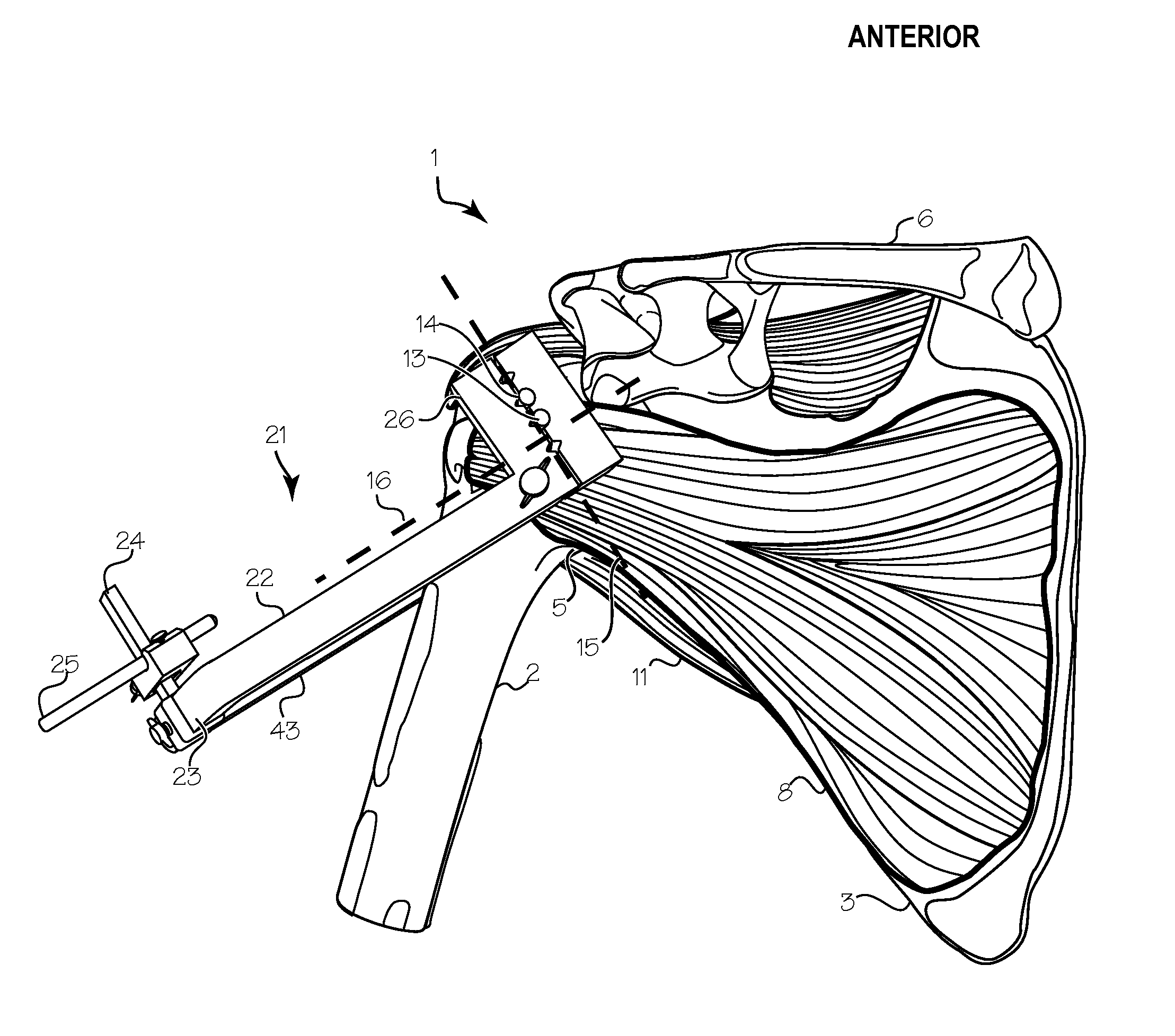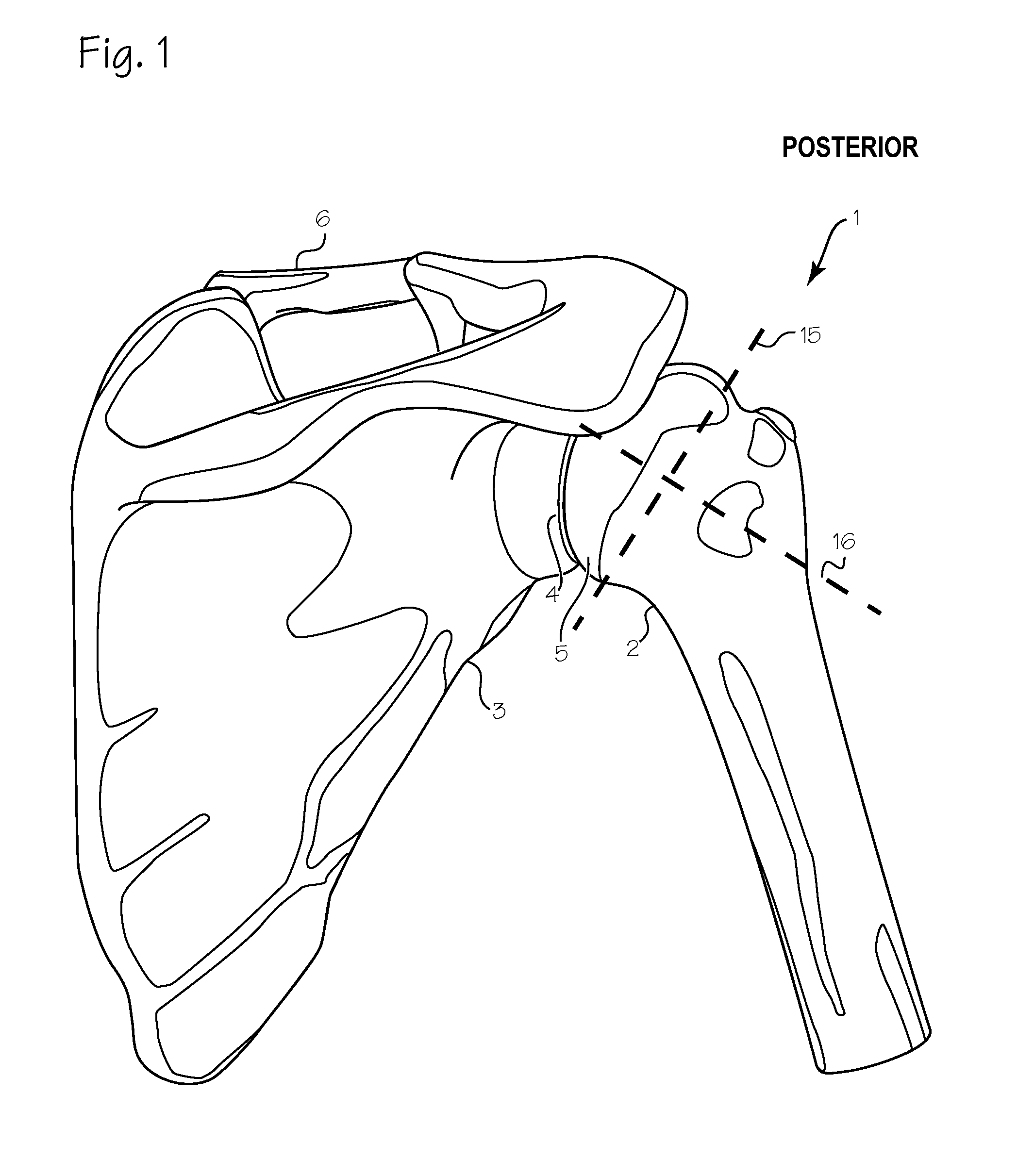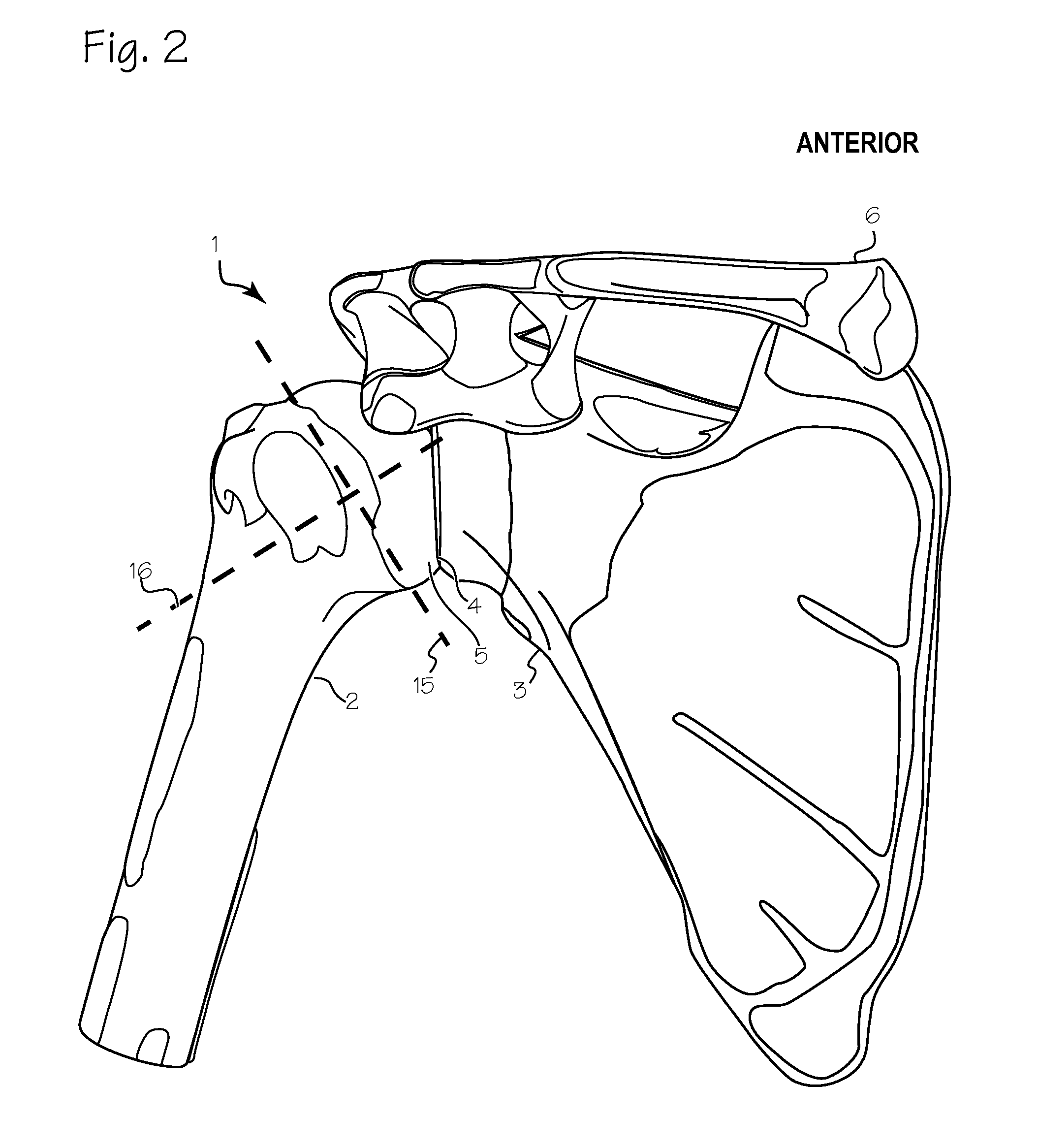Method of Humeral Head Resurfacing and/or Replacement and System for Accomplishing the Method
a technology of humeral head and head, applied in the field of shoulder surgery, can solve the problems of low risk of injury, high incidence of subscapularis dysfunction in anterior deltopectoral approach, severe restricted range of motion of patients vis-à-vis the natural range of motion, etc., and achieve the effect of reducing the risk of nerve damage and avoiding muscle or tendon cutting
- Summary
- Abstract
- Description
- Claims
- Application Information
AI Technical Summary
Benefits of technology
Problems solved by technology
Method used
Image
Examples
Embodiment Construction
[0030]FIG. 1 is a posterior (back) view of the shoulder 1. The major landmarks include the humerus 2 and the scapula 3, the glenoid fossa 4 and the head 5 of the humerus, the clavicle 6 and the acromonion 7. The humeral head is a roughly semi-spherical mass that fits within a corresponding socket of the glenoid fossa. Together, the humeral head and the glenoid fossa comprise the gleno-humeral joint. FIG. 2 is a corresponding anterior (front) view of the shoulder, showing the same landmarks. The goal of the devices and methods described in this application is to facilitate the remodeling and / or replacement of the surfaces of the humeral head and glenoid fossa. To gain access to the gleno-humeral joint, various layers of tissue (skin, muscle, tendons and ligaments) must be penetrated.
[0031]As shown in FIG. 3, the anterior surface of the gleno-humeral joint is covered by the lateral portion of the subscapularis muscle 8. The axillary nerve, illustrated by the black line 9, runs from th...
PUM
 Login to View More
Login to View More Abstract
Description
Claims
Application Information
 Login to View More
Login to View More - R&D
- Intellectual Property
- Life Sciences
- Materials
- Tech Scout
- Unparalleled Data Quality
- Higher Quality Content
- 60% Fewer Hallucinations
Browse by: Latest US Patents, China's latest patents, Technical Efficacy Thesaurus, Application Domain, Technology Topic, Popular Technical Reports.
© 2025 PatSnap. All rights reserved.Legal|Privacy policy|Modern Slavery Act Transparency Statement|Sitemap|About US| Contact US: help@patsnap.com



